In the fast-paced world of digital marketing, choosing the right ad format is crucial. Native advertising and popunder ads are two popular options. Each offers unique benefits and challenges. Understanding these can help you make informed decisions.
Native advertising blends seamlessly with content. It provides a non-disruptive user experience. This format is known for high engagement rates. It builds trust and credibility with audiences.
Popunder ads, on the other hand, appear behind the main browser window. They are often noticed only when the main window is closed. This can lead to quick visibility but may also be seen as intrusive.
For e-commerce business owners, selecting the right ad format can impact sales revenue. Digital marketing managers need to stay ahead of trends. They must implement strategies that drive results.
Affiliate marketers face challenges in maximizing revenue. They need to find the best platforms for product promotion. This article will explore the ROI of native advertising vs popunder ads. It aims to guide you in optimizing your ad strategies.
Understanding Native Advertising and Popunder Ads
Native advertising and popunder ads serve different roles in the digital marketing landscape. Each one has distinct characteristics that cater to specific marketing goals. Understanding these differences can help tailor campaigns more effectively.
Native advertising seeks to integrate seamlessly with the surrounding content. It aims to match the form and function of the media platform on which it appears. This includes formats like sponsored articles, videos, and infographics. The goal is to provide value while subtly promoting a brand.
Popunder ads, however, are designed for maximum visibility. They appear in a new browser window or tab, under the main page users initially visit. This format is often used to capture immediate attention, especially for time-sensitive offers.
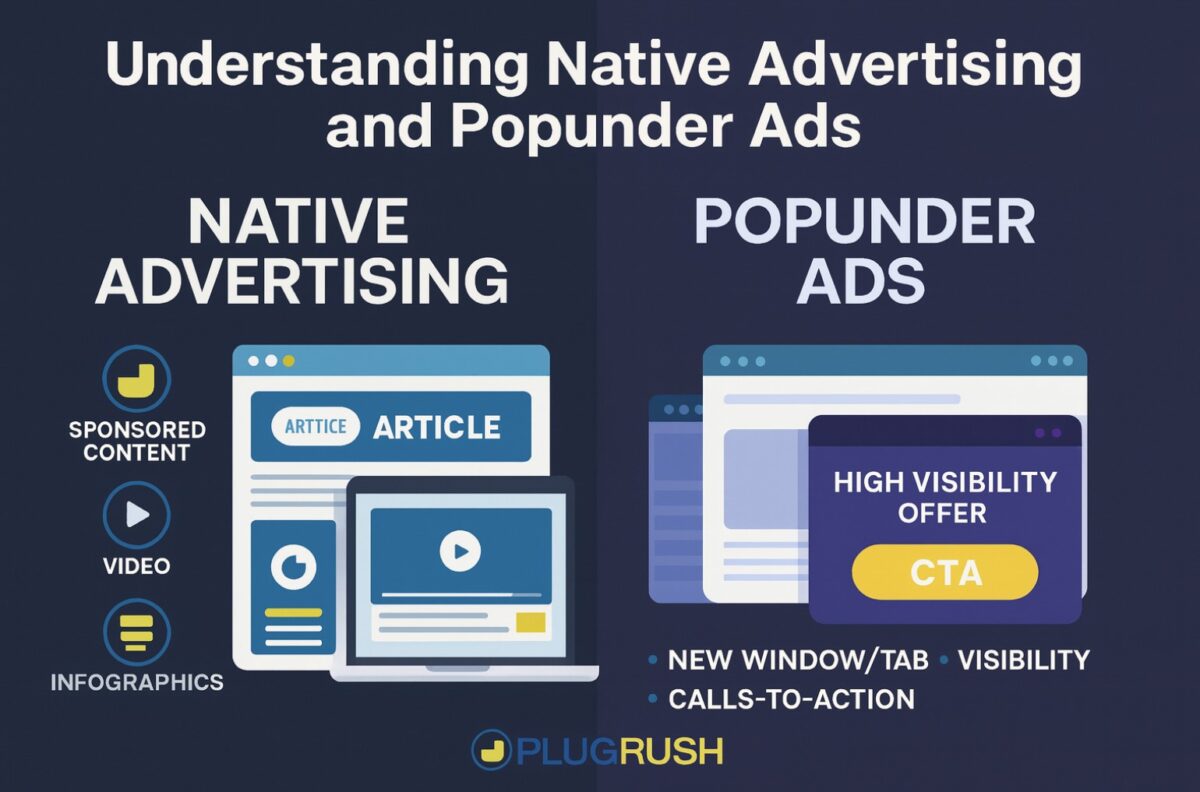
Both ad formats offer unique advantages and disadvantages. To choose the right one, consider campaign objectives, target audience, and budget. Here’s a quick breakdown:
- Native Ads: high engagement, storytelling, long-term relationship building.
- Popunder Ads: high impressions, immediate calls-to-action, budget efficiency.
To illustrate, consider a brand story told through engaging native content. Each format can complement different marketing strategies. The key is aligning them with your specific needs and goals.
How Native Advertising Works: Formats, Platforms, and User Experience
Native advertising is crafted to blend in with the organic content of a platform. It mimics the design and functionality of the platform, making it less intrusive to users. This creates a seamless user experience that encourages engagement.
The most popular native ad formats include sponsored articles, in-feed ads, recommended content, and custom content. These formats help brands integrate their messaging naturally into a viewer’s content consumption journey. This integration often enhances user trust and engagement compared to more disruptive ad types.
Platforms that support native advertising range from news websites and blogs to social media networks like Facebook and Instagram. These platforms provide the perfect environment for native ads to flourish because they capitalize on user-focused content interactions.
Native ads enhance the user experience by providing value without interrupting. They engage users with relevant and informative content, rather than overt promotion. This approach can significantly improve brand credibility and customer loyalty.
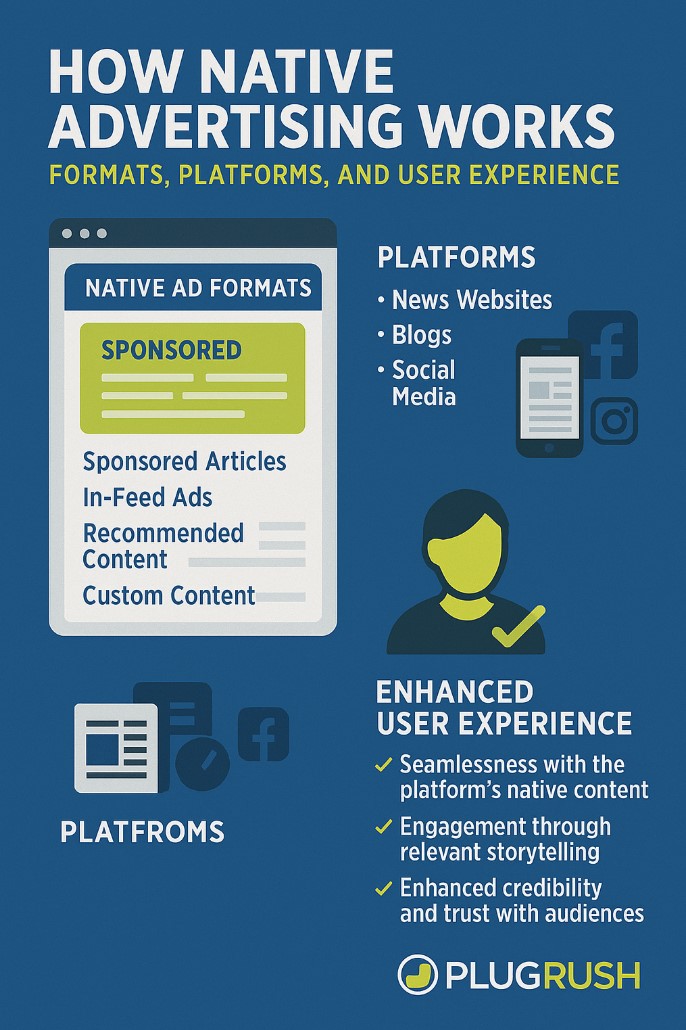
By leveraging advanced targeting options, native advertising reaches specific audience demographics effectively. These may include location-based targeting, demographic filters, and behavioral profiling.
Native ads are highly effective because they align with the content-driven habits of users. Here’s a quick list of their unique attributes:
- Seamlessness with the platform’s native content
- Engagement through relevant storytelling
- Enhanced credibility and trust with audiences
Visualize how native ads fit seamlessly with editorial content.
How Popunder Ads Work: Mechanics, Placement, and User Perception
Popunder ads function by loading beneath the main browser window. Users don’t immediately notice them, as they only become evident when the primary tab is closed. This subtlety in approach makes them less intrusive, but not invisible.
The placement of popunder ads is strategic and focuses on high-traffic websites. These ads aim to capture attention without disrupting the user’s current activity. This tactic can be effective in environments with dense digital interactions.
User perception of popunder ads can vary. Some see them as a nuisance, while others view them as a more respectful alternative to aggressive pop-ups. The less confrontational nature of popunders makes them somewhat more palatable.
For advertisers, popunder ads are a cost-effective means of achieving broad visibility. They often provide high impressions at a lower cost compared to other formats. This cost efficiency is attractive, especially for those with limited budgets.
Though challenging, optimizing user experiences with popunders requires smart scheduling and targeting. Delivering them at appropriate times is key, as is focusing on audiences that are more receptive.
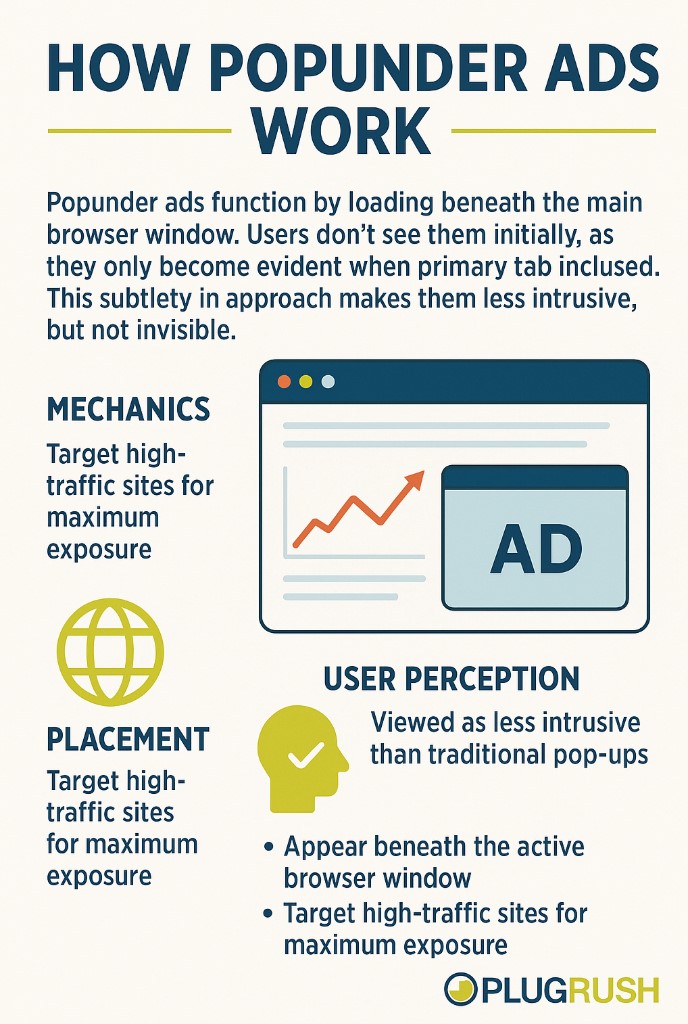
Key points on popunder ad mechanics include:
- Appear beneath the active browser window
- Target high-traffic sites for maximum exposure
- Viewed as less intrusive than traditional pop-ups
Imagine a popunder ad quietly hidden beneath a main window, patiently waiting to be discovered.
Key Performance Metrics: Measuring ROI for Native and Popunder Ads
Measuring ROI for both native ads and popunder ads requires focusing on key performance metrics. These metrics provide insights into the effectiveness of each ad format. Understanding them helps marketers make informed decisions.
For native advertising, engagement metrics are paramount. Metrics like click-through rates (CTR), time spent on content, and social shares indicate how well the ad resonates with the audience. These metrics often reflect the ad’s contextual relevance and effectiveness in storytelling.
Popunder ads, on the other hand, are typically evaluated based on impressions and direct conversions. Metrics such as the number of views, click rates, and immediate purchase actions give a snapshot of their direct impact. Quick results are often expected from popunder campaigns, especially for time-sensitive promotions.
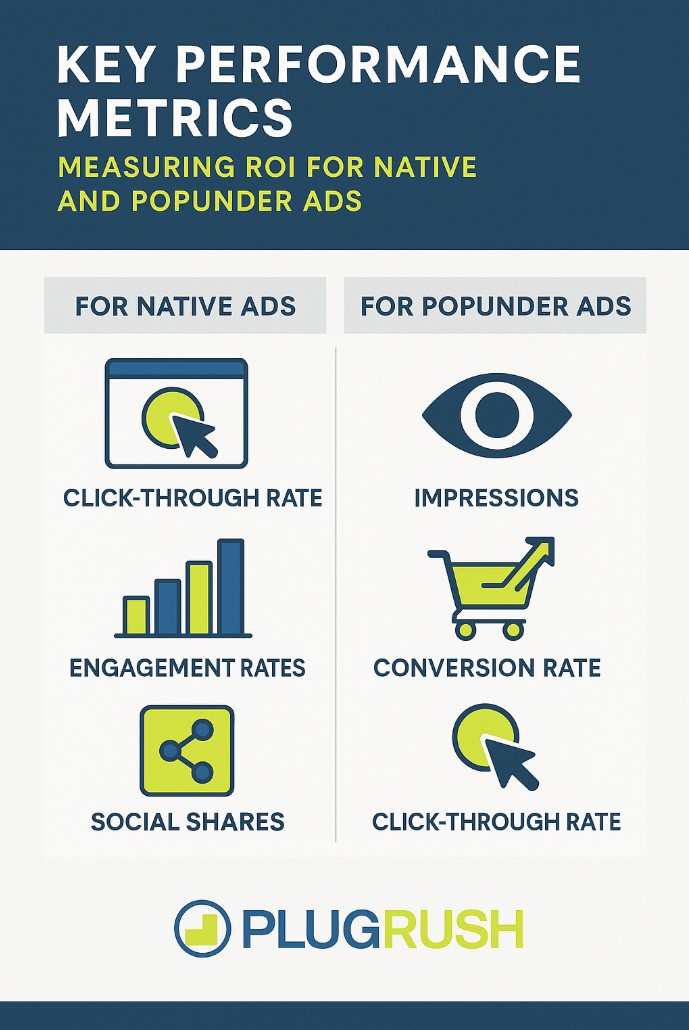
Both ad formats benefit from advanced targeting and testing. This includes A/B testing different strategies to optimize performance and enhance ROI. Tailoring ads to specific audience segments further improves outcomes.
Key metrics for measuring effectiveness in native and popunder ads include:
- For Native Ads: CTR, engagement rates, and social shares
- For Popunder Ads: Impressions, conversion rates, and click-through rates
Visualizing performance comparisons for native and popunder ads can aid strategic decisions.
Pros and Cons: Native Advertising vs Popunder Ads
Choosing between native ads and popunder ads involves weighing their advantages and disadvantages. Understanding these can help optimize your advertising strategy for maximum ROI.
Native Advertising Pros:
- Blends seamlessly with content, enhancing user experience.
- Often results in higher engagement and lower ad blindness.
- Perceived as more trustworthy and less intrusive.
Native Advertising Cons:
- Requires creative and content alignment with the host platform.
- Initial setup and content creation can be resource-intensive.
- ROI may take longer to realize compared to immediate ads.
Native advertising excels in engaging and building trust with audiences. Its non-disruptive nature facilitates long-term relationships. However, it demands significant effort in crafting compelling content.
Popunder Ads Pros:
- Effective for capturing immediate attention with high visibility.
- Cost-efficient for advertisers focused on impressions and quick results.
- Useful for direct response and time-sensitive campaigns.
Popunder Ads Cons:
- Often seen as intrusive, which can lead to negative user experience.
- Can suffer from high bounce rates and ad-blocker challenges.
- May require frequent optimizations to maintain performance.
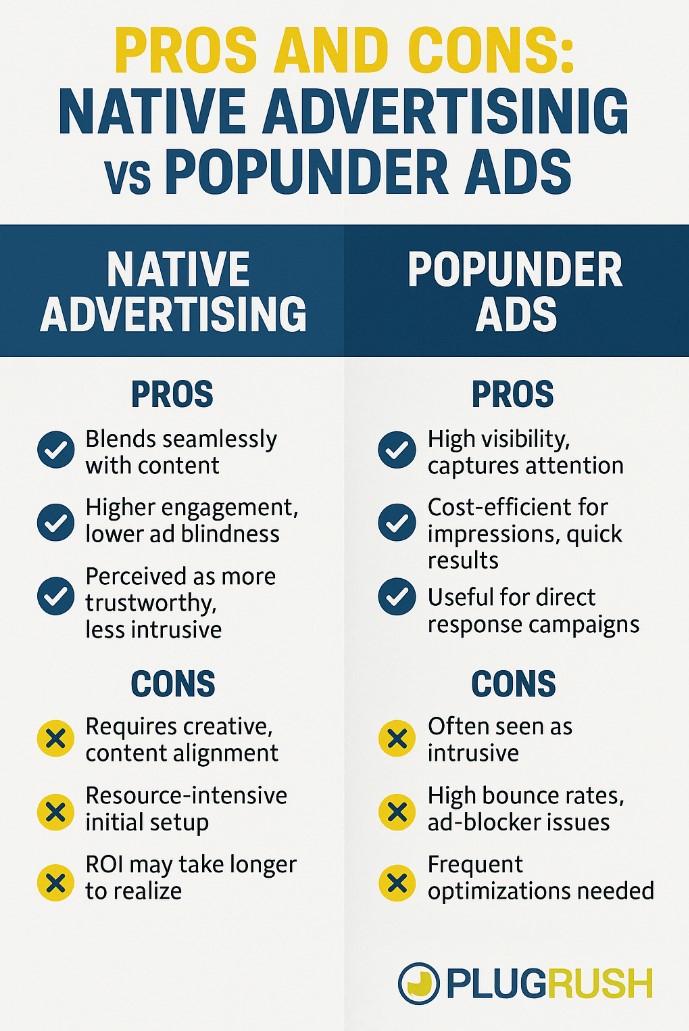
Popunder ads are suitable for advertisers seeking fast results. Their ability to generate immediate traffic makes them ideal for quick campaigns. But, they can irritate users, which impacts brand perception.
Selecting between native and popunder ads hinges on your campaign goals and audience behavior. Balancing their benefits with potential drawbacks ensures effective ad strategies.
Use Cases: When to Choose Native Ads or Popunder Ads
Knowing the right circumstances for deploying native ads versus popunder ads is crucial for ad strategy success. Each has specific scenarios where they shine.
For native advertising, these ads are perfect for brands focusing on storytelling and brand affinity. They work well when you aim to nurture relationships over time. Use native ads to integrate your brand message within content that aligns with user interests. They are also effective when targeting highly specific demographics through content platforms.
Native ads serve best in these scenarios:
- Building long-term customer engagement.
- Enhancing brand credibility with valuable content.
- Aligning with content-driven digital marketing strategies.
On the other hand, popunder ads are most effective when your goal is immediate visibility. They perform well in high-traffic environments where quick conversions are essential. Consider using popunder ads for promoting limited-time offers or events. These ads are especially useful when operating within a tight budget, as they provide wide reach cost-effectively.
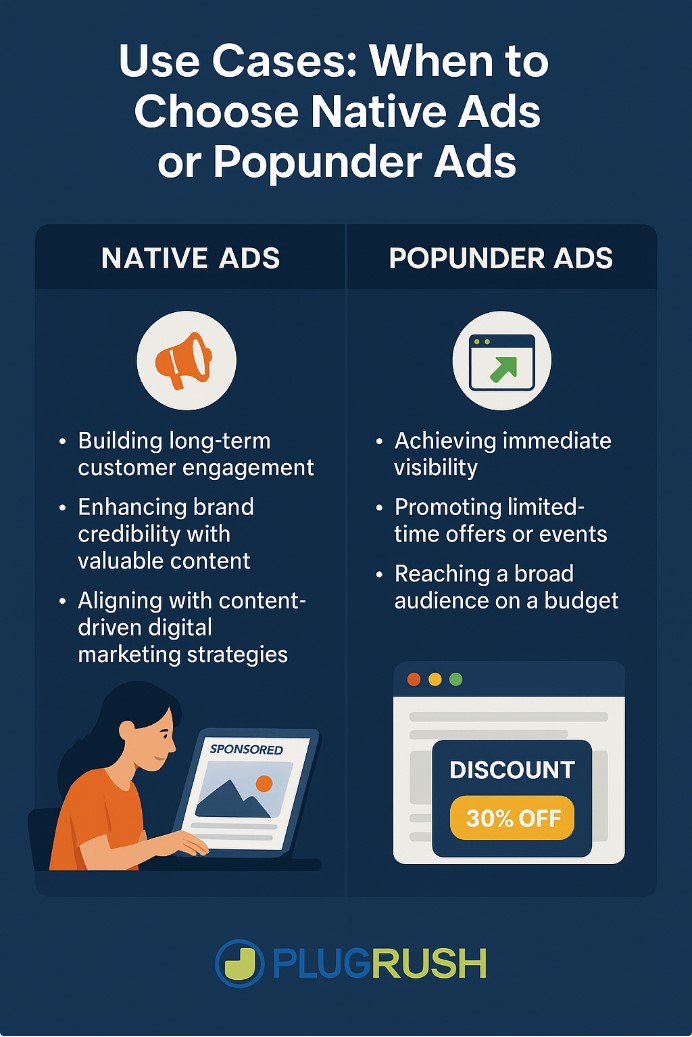
In summary, choosing the right ad type depends on the campaign’s goals, timeframe, and audience expectations. Understanding when and how to use each format optimizes their potential ROI.
Industry Insights: ROI Benchmarks and Real-World Examples
Understanding ROI benchmarks in digital advertising provides a clear picture of what to expect from native advertising and popunder ads. Based on industry reports, native ads often boast higher engagement rates. This is mainly due to their seamless integration with content, which enhances user trust and interaction.
For example, a well-known e-commerce brand utilized native ads to amplify their brand story across leading content websites. As a result, they saw a 50% increase in engagement within three months. Such strategies leverage the trust that consumers place in familiar content formats to improve ROI.
Popunder ads, though often less engaging, deliver quick visibility and conversions. A gaming company leveraged popunder ads during a new product launch, seeing immediate traffic spikes. This approach is ideal for direct response campaigns seeking fast results.
Here’s a quick comparison of key ROI highlights:
- Native Advertising: Higher engagement and long-term customer relationships.
- Popunder Ads: Immediate conversions and increased brand exposure.
In practice, successful deployment hinges on understanding your audience’s preferences and campaign objectives. Analyzing past performance data from these ad formats helps refine strategies over time to maximize returns.
Ad Strategies for E-commerce, Digital Marketers, and Affiliates
E-commerce businesses must adopt ad strategies that resonate with their target audience. Leveraging native advertising can elevate brand storytelling, capturing consumer interest through meaningful content. Crafting engaging articles or videos can drive organic traffic to product pages, enhancing sales performance.
For digital marketers, staying ahead of trends is crucial. Employing a mix of native and popunder ads can offer balance between engagement and immediate visibility. Popunder ads can be utilized for time-sensitive promotions, while native ads nurture long-term brand loyalty.
Affiliate marketers benefit from understanding where their audience spends time online. Popunder ads, when used strategically, can direct significant traffic to affiliate links. Meanwhile, native ads enhance credibility by aligning with trusted platforms, increasing conversion potential.
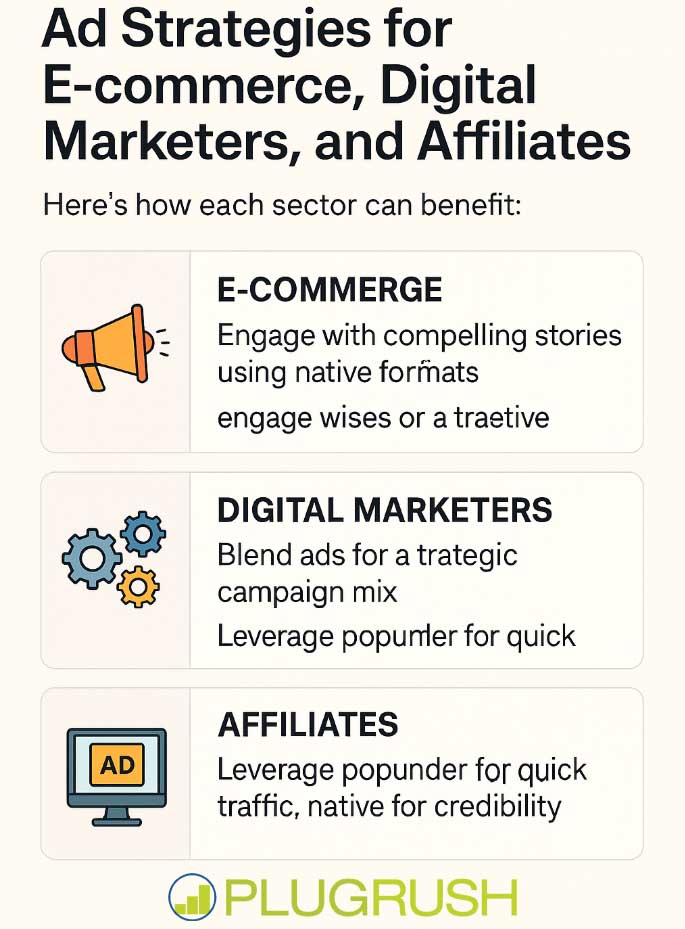
Here’s how each sector can benefit:
- E-commerce: Engage with compelling stories using native formats.
- Digital Marketers: Blend ads for a strategic campaign mix.
- Affiliate Marketers: Leverage popunder for quick traffic, native for credibility.
Tailored strategies ensure that each group can optimize their return on investment. By understanding the nuanced benefits of both ad types, businesses can better align their goals with effective online advertising practices.
Future Trends: Innovations and Evolving Best Practices
The digital marketing landscape is continuously evolving. Both native advertising and popunder ads are adapting to keep pace. Marketers are increasingly focusing on creating more personalized ad experiences, enhancing both user engagement and satisfaction.
Native advertising is exploring interactive formats. Shoppable ads are gaining traction, allowing users to purchase directly from engaging content. This innovation bridges the gap between inspiration and purchase, enhancing conversion rates seamlessly.
Popunder ads are also evolving. New best practices include integrating sophisticated targeting algorithms. These advancements help marketers reach niche audiences more effectively, maximizing the impact of each ad impression.
Key trends to watch include:
- Interactive Native Ads: More brands are adopting clickable and immersive content.
- Advanced Targeting: Popunder ads aim for precise demographic hits.
- Cross-Platform Synchronization: Ensures consistent messaging across devices and channels.
Marketers who embrace these trends can expect to see improved campaign performance. Staying informed about these innovations is crucial for maintaining a competitive edge in online advertising.
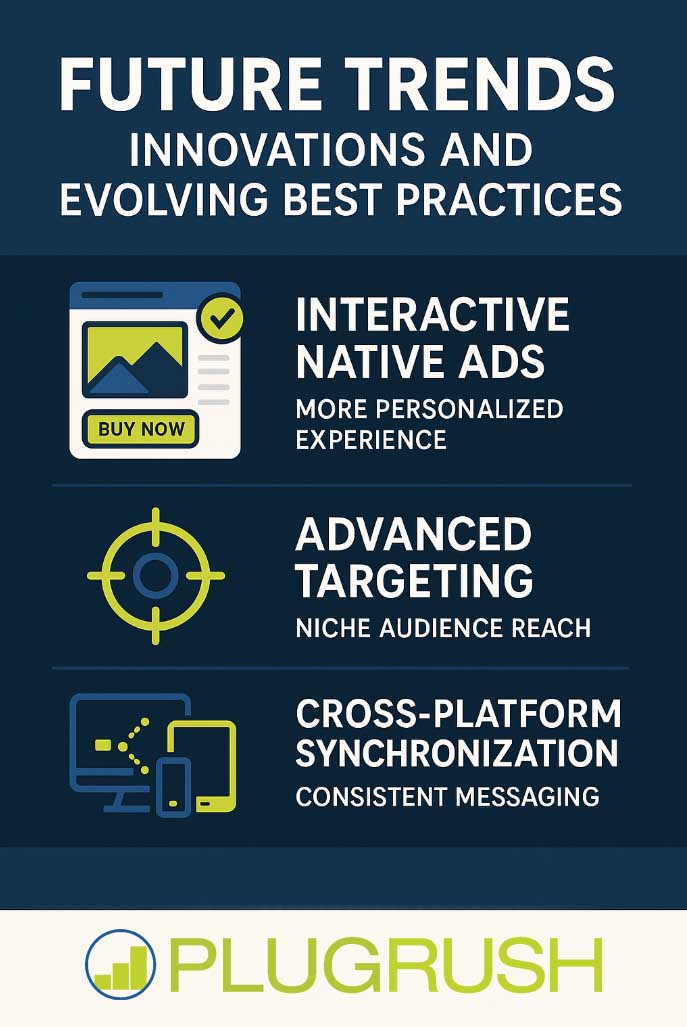
Conclusion: Which Delivers Better ROI?
Determining which ad format delivers better ROI depends on various factors. Your campaign objectives, target audience, and budget influence the effectiveness of native advertising and popunder ads. While native ads excel in building long-term relationships through engaging content, popunder ads provide quick visibility and potential for immediate conversions.
Native advertising generally offers higher engagement and trust, contributing to sustainable brand growth. Conversely, popunder ads are effective for short-term goals, especially when targeting specific actions like app downloads or event registrations.
For optimal results, consider integrating both formats strategically. Evaluate your specific needs and allocate resources accordingly. By understanding each format’s unique advantages, you can craft a tailored approach that maximizes your advertising investment and enhances your overall marketing success.




